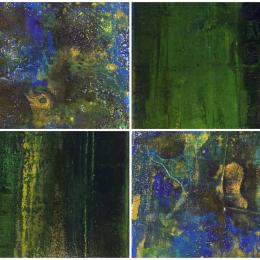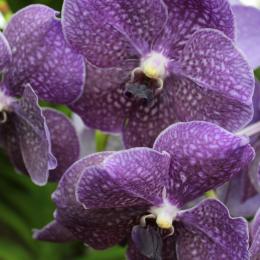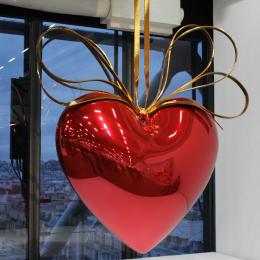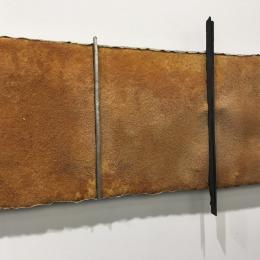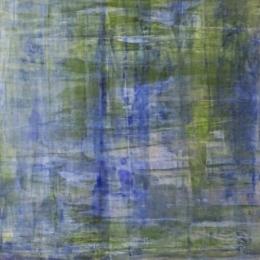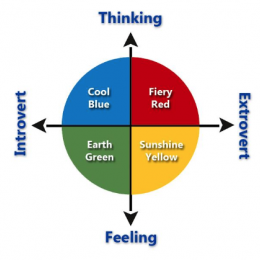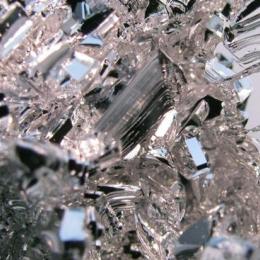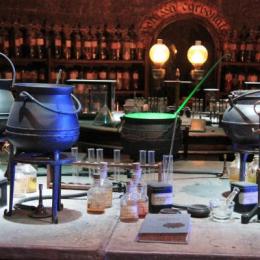Making that painting was a real struggle for me, on the one hand technically and on the other hand emotionally.
I used different blue pigments in different solvents which still reacted with each other long time after I decided the painting is ready, but not in the desired way. The components changed colours and structures and I needed to find out what happened to be able to correct it e.g. use it. Thus I tried different compositions on smaller canvas which resulted in a little series of blue-greens.
making of
In the 18th century, quinine, obtained from South America was the expensive medicine used to treat Malaria. Because of the high costs, chemists were experimenting to develop a synthetic equivalent, so did W.H.Perkin. He did not succeed in creating quinine out of coal tar but accidentally discovered the colour mauve.
Vor ein paar Wochen, während einer Diskussion über Nachhaltigkeit, Sparen und Konsum, hat mich jemand gefragt, wie alt mein ältestes Kleidungsstück ist.
Damals habe ich geantwortet, dass ich mir 1994 ein Kleid gekauft habe, welches ich noch immer besitze und anziehe (ein klassisches Etuikleid und so gar nicht altmodisch).
I finished another painting, a bit similar to the Autumn Leafs painting, but with a much clearer structure and so I think, more powerful.
Also, I used different materials: lime, marble powder and cold marble wax for a smooth structure and shellac ink for a warm subtle tone.
This time, I really wanted to get a very deep, strong red. It’s not as easy as you might think by using different shades of red pigments. Red ochre is anhydrous iron oxyde, a mineral. It comes in shades from very dark brown-red to light yellow.
I always experiment with different materials and inspired by some art I saw at the ART Basel, I wanted to create artificial rust on canvas.
There are ready to buy kits for creating artificial rust, which are quite expensive and I thought, also boring to apply. I like to figured it out by myself 🙂
Obviously, I needed some fine metal shavings, which I could get from the local blacksmith. He just shook his head when I told him what I was about, I believe he thinks I am a bit crazy…
Ich bemale nicht nur Leinwände an, sondern auch richtige Wände, genauer gesagt, ich verputze sie. So auf die traditionelle Art, mit Kalk, Sand, Gips und Marmormehl, je nach Untergrund und Verwendungszweck. Das ist für alte Häuser hier in Südfrankreich die beste und auch nachhaltigste Methode. Die alten Häuser sind überwiegend aus Natursteinen und Kalk oder Gips und Sand gebaut. Die Wände sind oft bis zu 60 cm dick, regulieren so ganz gut das Raumklima.
While preparing the opening of the ART Fabrik I was also working on two new paintings.
One, a bluish-green combination of different shades of green and blue pigments to create a light, sunny feeling when looking at it. I got inspired by the colours I see when wake up every morning and watch the sky where it meets some almond trees. Unfortunately, I could not take a very good picture of it as it was sold immediately after the opening of our ART Fabrik. The pic above shows it.
I was searching for a long time for the perfect blue, played around with different pigments, lost my track a bit through the dead of my mother and finally felt that I need another colour in this painting.
My perfect blue has got a dash of green, a green I created by adding some terre jaune italienne to the Lapis Lazuli blue.
Blue stands for the ratio, the cool analytical part of a person. Do you remember?
It is often said that grey is not a colour, but a statement, if you want to hide or remain invisible (the grey mouse). Sometimes, instead of positioning oneself for one side or another, we are looking for a way in the middle between two opposites, between white and black.
But grey can also be understood as a departure from all colours, all affluence, as a conscious counter-design to a noisy world.
To be honest, I did not have these thoughts when I started the painting. I just wanted to experiment with black and white pigments, dissolved in acrylic and a silver oil paint.
I am always experimenting with different natural materials, such as lime, marble powder, fine sand, ash, to create depth and structure.

